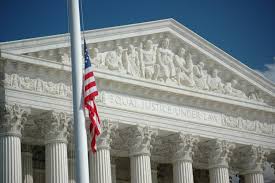The J-1 non-immigrant visa is issued by the United States to, among others, scholars, professors and exchange visitors that enter the country to participate in  programs that promote cultural exchange, and to engage in medical and business training. The visa came into effect under the Fulbright Hays ACT of 1961. Applicants must meet the eligibility criteria defined by a particular J-1 visa. These include English language requirements and sponsorship by a university, private sector or government program. There are at least nine private sector and six government and academic J-1 visa programs.
programs that promote cultural exchange, and to engage in medical and business training. The visa came into effect under the Fulbright Hays ACT of 1961. Applicants must meet the eligibility criteria defined by a particular J-1 visa. These include English language requirements and sponsorship by a university, private sector or government program. There are at least nine private sector and six government and academic J-1 visa programs.
The J-1 visa duration of stay is specified in the accompanying DS-2019 Certificate of Eligibility for Exchange visitor form, which is produced by the Department of State through the Student and Exchange Visitor Information System (SEVIS). The duration includes a 30 day grace period after the full duration of stay indicated on the DS-2019.
Many J-1 visa holders are subject to the two year mandatory home residency requirement. The requirement precludes the J-1 visa beneficiary from moving into a non-immigrant or permanent residency status in the United States unless he returns to his country of last permanent residence for at least two years cumulatively. The two year residency requirement applies to those under exchange programs funded by either their government or the United States government and involves specialized knowledge or skills deemed necessary by their home country or under graduate medical training.
The two year home residency requirement can, however, be waived in the following ways: a no-objection statement from the beneficiary’s home country government; a demonstrated exceptional hardship to a United States citizen or legal dependent of the beneficiary if the beneficiary were to depart the United States; a demonstrated persecution in the beneficiary’s home country upon return; a United States Federal Government agency expression of interest in the beneficiary to work on a project in the United States, and detriment to the project by the beneficiary’s departure; or if the beneficiary is a foreign medical graduate with full-time employment offer at a health care facility in a designated professional shortage area in the United States under the Conrad program.
This blog will focus a bit more on the no-objection statement waiver. The waiver is a letter to the Waiver Review Division from the beneficiary’s home government in which the government states that it does not object to the beneficiary’s decision to change his status to non-immigrant or permanent residency status in the United States. All J-1 visa beneficiaries can pursue this waiver type, except physicians that received United States graduate medical training under the J-1 visa program or those that are directly or indirectly funded by the United States government. If the beneficiary is directly or indirectly funded by the United States government, his government would have to provide the no-objection statement to the funding agency, which would, in turn, issue a no-objection to the beneficiary’s permanent stay or change to a non-immigrant visa status.
The J-1 visa beneficiary requests the no-objection statement from his home embassy in the United States, which, in turn, forwards the request to the specific concerned ministry in the country. The ministry then executes the statement, and either directly sends it to the Department of State Waiver Review Division through the Chief of Mission in the Consular Section at the US embassy in the country or to its embassy in the US, which then forwards it to the Waiver Review Division.
Obtaining the no-objection statement can be time consuming. In many cases, it requires the applicant to directly contact and establish a relationship with his embassy or ministry administrative staff charged with executing the statement. At other times, the issuing ministry may need guidance in executing the document, especially if it has never executed one before. There are times when it can take as long as six months to process. The exact processing time depends on the country in question and amount of pressure the beneficiary exerts on the process.
Upon obtaining the no-objection statement, the waiver applicant can then complete and submit the DS-3035 application to the Waiver Review Division in which he asks for a waiver of the residency requirement. Reviewing and deciding on the waiver request can take a long time as well. In many cases, it has taken at least six months.
It is imperative that the beneficiary obtain and keep a copy of the no-objection statement. It may be useful in proving that it was sent to the Waiver Review Division if the Division were ever to dispute whether it was ever sent the original.
This blogger is an attorney at Swaray Law Office in Brooklyn Center, Minnesota. Brooklyn Center is near Brooklyn Park, Crystal, and north of Minneapolis and St. Paul in Minnesota. Contacting the office is by email at swarayassociates @cs.com or 763-549-0670.

